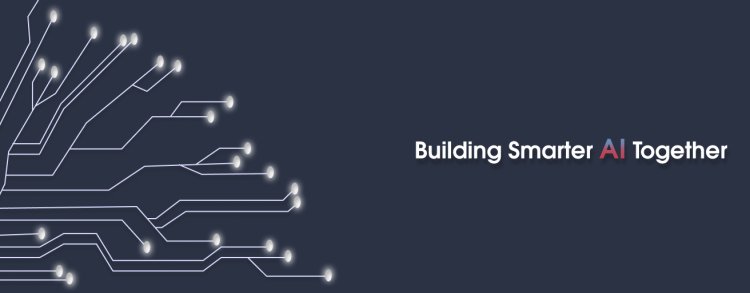License Plate Detection: How It Works, Who Uses It, and What’s Next
Whether you’re a tech enthusiast, a security professional, or a city planner, this guide will provide everything you need to know about license plate detection, from how it works to its real-world applications and the challenges it faces.

How often have you driven past a toll booth or entered a secured parking lot and been greeted with a seamless, automated process? Chances are, that technology was driven by license plate detection. Once a concept limited to science fiction, this innovative system has now become an integral tool in industries ranging from security to transportation.
This blog will guide you through the essentials of license plate detection, explaining how it works, its applications, and its potential to shape the future of technology. Whether you're a tech enthusiast, law enforcement professional, or security expert, this comprehensive guide will highlight why you should be paying attention to this evolving field.
What is License Plate Detection?
License plate detection is a technology designed to identify and read vehicle license plates through cameras or video feeds. By combining image processing, pattern recognition, and Optical Character Recognition (OCR), it turns an image of a license plate into readable and actionable data.
A Brief History of License Plate Detection
This technology emerges from disciplines like computer vision and image processing. Early systems relied on simplistic algorithms sensitive to lighting and angles. However, continuous improvements in camera resolution, affordability of computing power, and advancements in AI and machine learning have optimized its performance, enabling precise and real-time analysis even in difficult scenarios like poor weather conditions and high speeds.
How Does License Plate Detection Work?
License plate detection may seem complex, but the process is straightforward when broken down into these major steps:
1. Image Acquisition
High-speed and high-resolution cameras are used near toll booths, parking lots, or other key locations to capture clear vehicle images, even in challenging conditions like low light or fast motion.
2. Image Processing and Localization
Through advanced image processing techniques, the system identifies the portion of the captured image that contains the license plate. Detection algorithms use edge detection and contour analysis to determine dimensions, angle, and location.
3. Character Extraction with OCR
Once the plate is isolated, optical character recognition (OCR) software extracts the alphanumeric characters. These symbols are then converted into machine-encoded text that's readable and ready for further processing.
4. Database Matching and Insights
After extracting the license plate information, it is cross-checked with connected databases. This can yield real-time alerts, allow or restrict access, and provide valuable insights such as traffic patterns.
Real-World Applications of License Plate Detection
1. Law Enforcement
License plate detection plays a critical role in maintaining public safety and enforcing laws.
- Traffic Monitoring: Identify vehicles that violate speed limits or jump traffic signals.
- Crime Prevention: Track and locate stolen vehicles or monitor persons of interest.
2. Security Enhanced through Automation
Security concerns, particularly in restricted areas, are significantly mitigated with license plate recognition.
- Guarded facilities like gated communities, corporate campuses, or border crossings use detection to restrict access and provide automated entry.
- Surveillance systems monitor activity around these facilities for unauthorized behaviors.
3. Improved Transportation Systems
License plate recognition is transforming the way urban and national transportation networks operate.
- Toll Collection: Electronic toll systems use the technology to ease traffic flow and reduce manual overhead.
- Parking Management: Automate entry and fee collection in parking lots to save time and minimize disputes.
- Traffic Analysis: Provide actionable data that helps urban planners reduce congestion.
4. Commercial Use Cases
Businesses have started leveraging license plate detection to improve their operations and customer experience.
- Inventory Tracking: Delivery fleets track and streamline their journeys, ensuring timely deliveries.
- Customer Identification: Car washes or shipping yards use the technology for more seamless customer experiences.
- Marketing: Retailers analyze visitor data for tailored advertising based on observed traffic trends.
Why License Plate Detection Matters
The widespread adoption of license plate detection systems is no coincidence. Businesses and government agencies alike are recognizing the unmatched benefits of automation and data collection.
1. Improved Security and Surveillance
Integrating license plate detection with broader monitoring systems allows for faster identification of high-risk vehicles, mitigating potential threats.
2. Increased Efficiency
Imagine tollbooths or parking facilities without someone physically issuing tickets or collecting payments. License plate detection has made these processes quick, seamless, and scalable.
3. Enhanced Decision-Making with Better Data
Real-time insights on traffic, parking trends, or regional violations allow administrators to design smarter, more effective policies.
4. Cost-Effective Automation
By eliminating manual input, businesses not only reduce costs but also minimize human errors, improving operational accuracy.
Challenges and Limitations of Current Systems
Despite its significant advantages, the technology comes with challenges that industry professionals are actively addressing.
Accuracy Issues
- Environmental factors like intense rain, low visibility, or extreme angles can impact accuracy.
- Obstructed plates (due to dirt, mud, or deliberate tampering) remain a persistent limitation.
Privacy Concerns
The use of surveillance tools raises concerns about how data is collected, stored, and used. Striking the right balance between operational efficiency and user privacy is essential.
System Weaknesses
Low-resolution cameras or legacy databases might reduce the effectiveness of the technology.
The Future of License Plate Detection Technology
Advancements in AI and machine learning show strong potential to improve license plate detection further. Here's what the future might hold:
1. Greater AI Integration
AI-powered systems continuously learn to adapt to new challenges, including identifying damaged or partially visible license plates.
2. Smart Cities
License plate detection is expected to play a key role in connected and automated smart cities, enabling streamlined public services and safety operations.
3. Autonomous Vehicles
As autonomous vehicles continue to evolve, license plate detection could guide navigation and facilitate vehicle-to-vehicle communication for safer traffic ecosystems.
4. Enhanced Ethics and Privacy Standards
Future regulations and policies will aim to ensure that technological benefits do not come at the cost of personal freedoms and data misuse.
Moving Forward with License Plate Detection
License plate detection represents a growing field of innovation, offering immense potential to reshape industries and everyday operations. From improving security to automating infrastructure, its role cannot be understated.
For organizations and professionals looking to integrate this system, now is the time to explore and experiment. With technologies like AI, IoT, and next-generation cameras driving the field forward, there has never been a better moment to adopt license plate detection and contribute to a more efficient and secure world.
What's Your Reaction?

















.jpg)